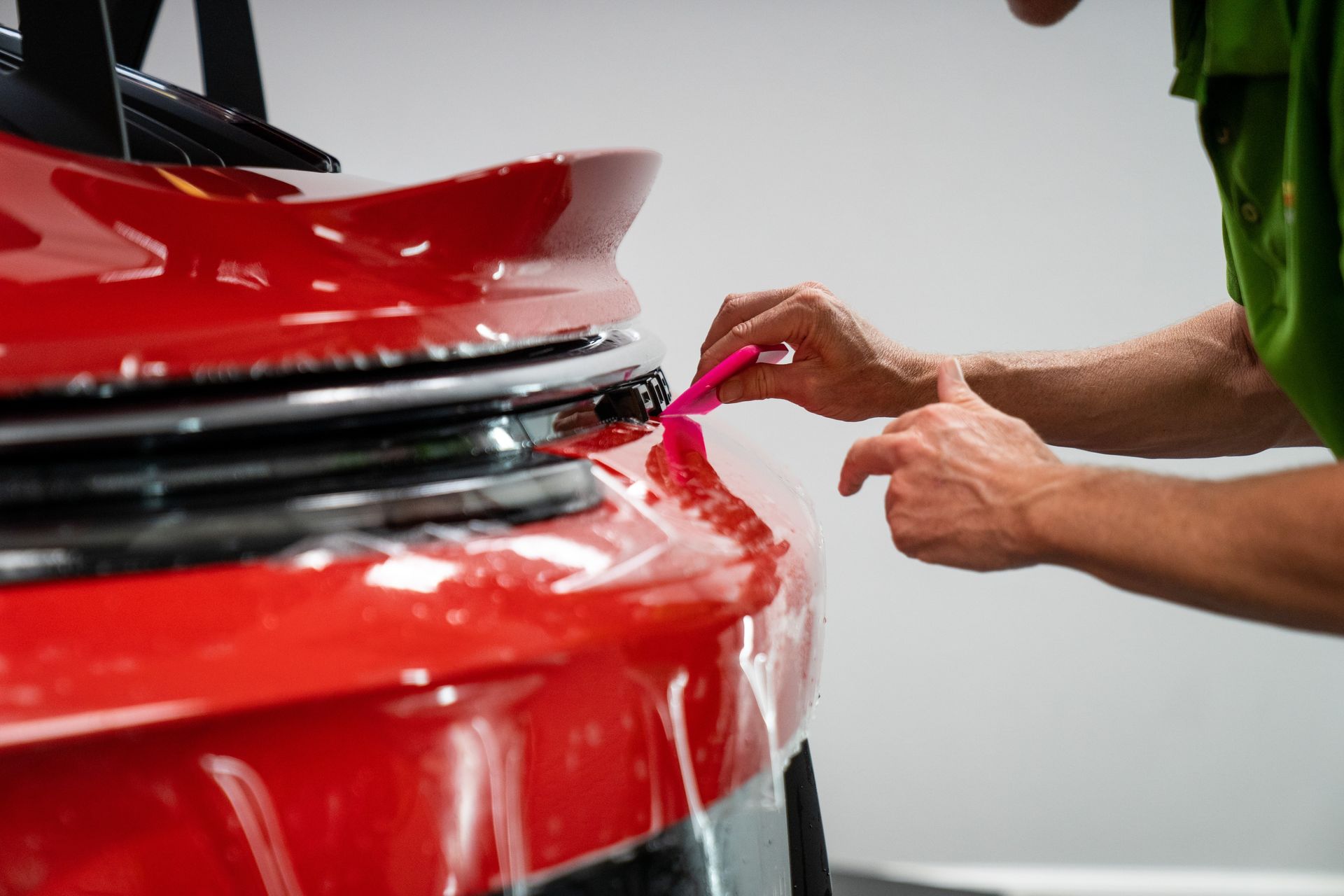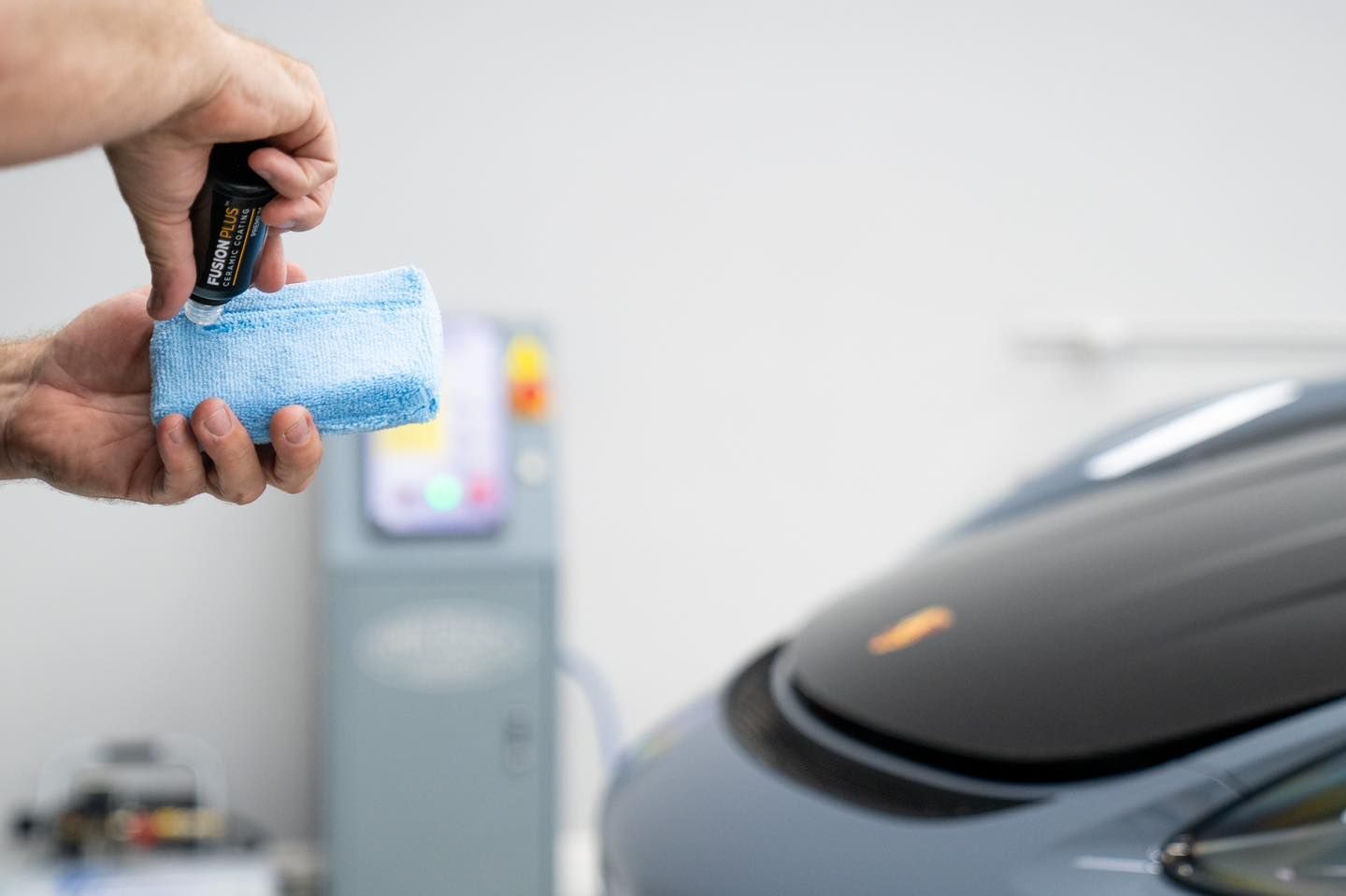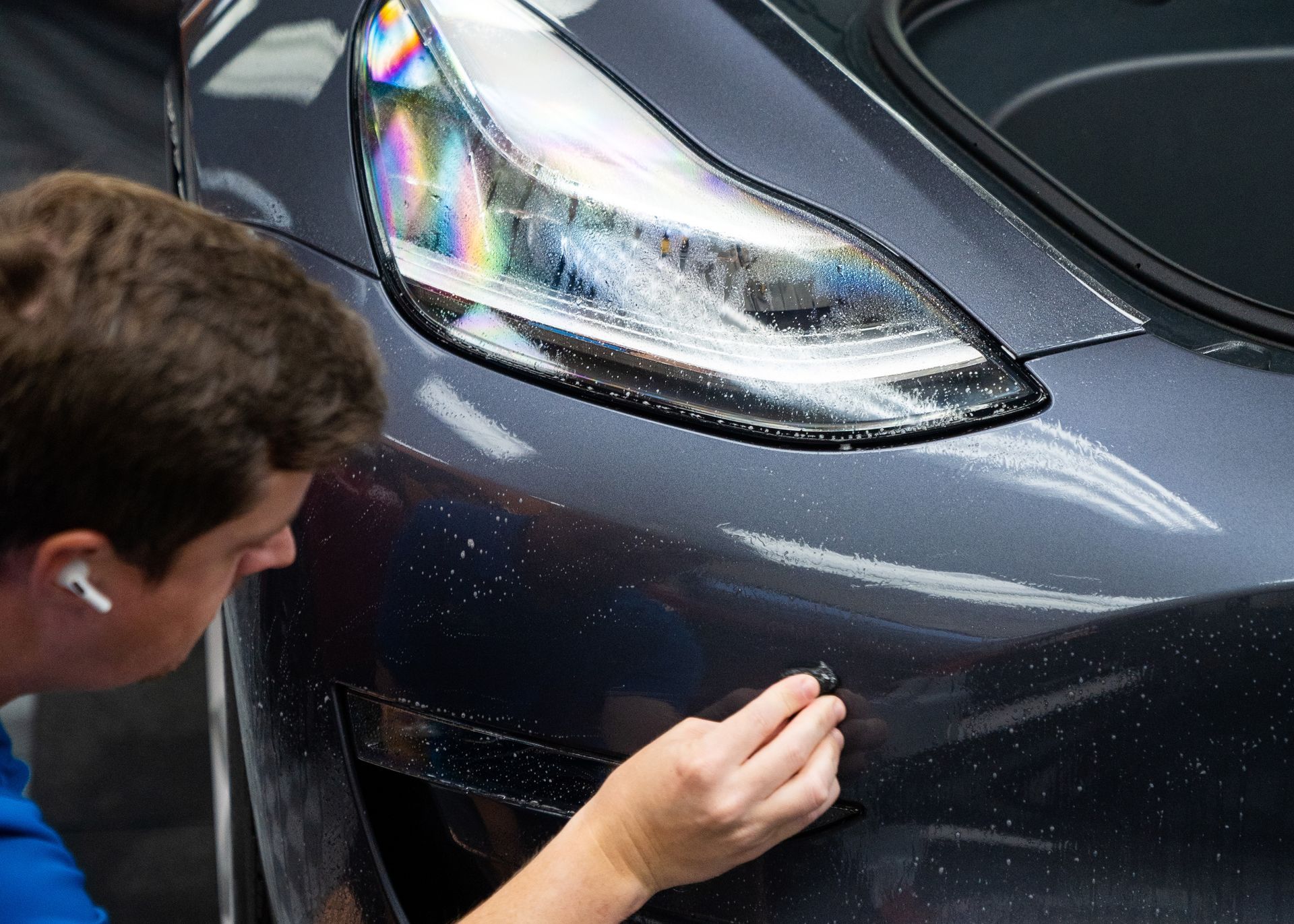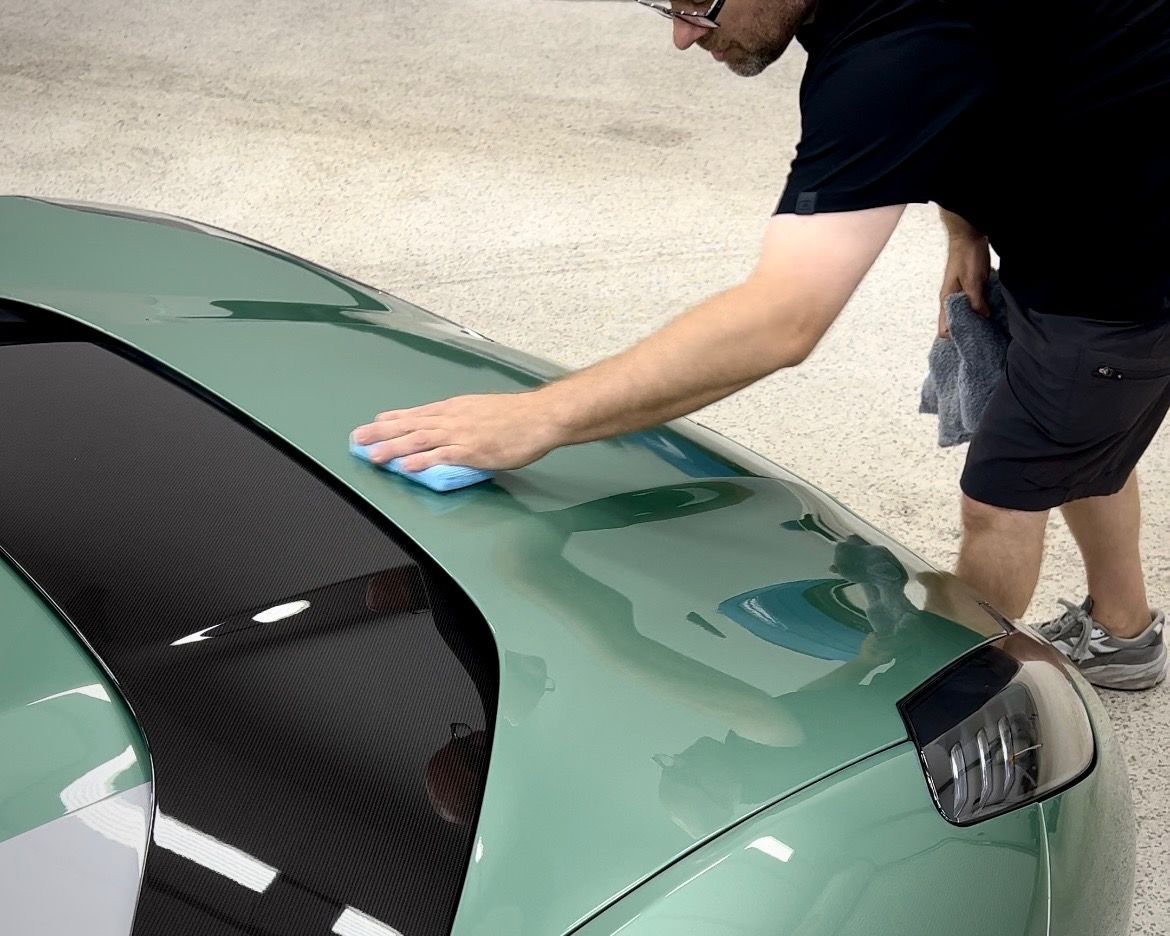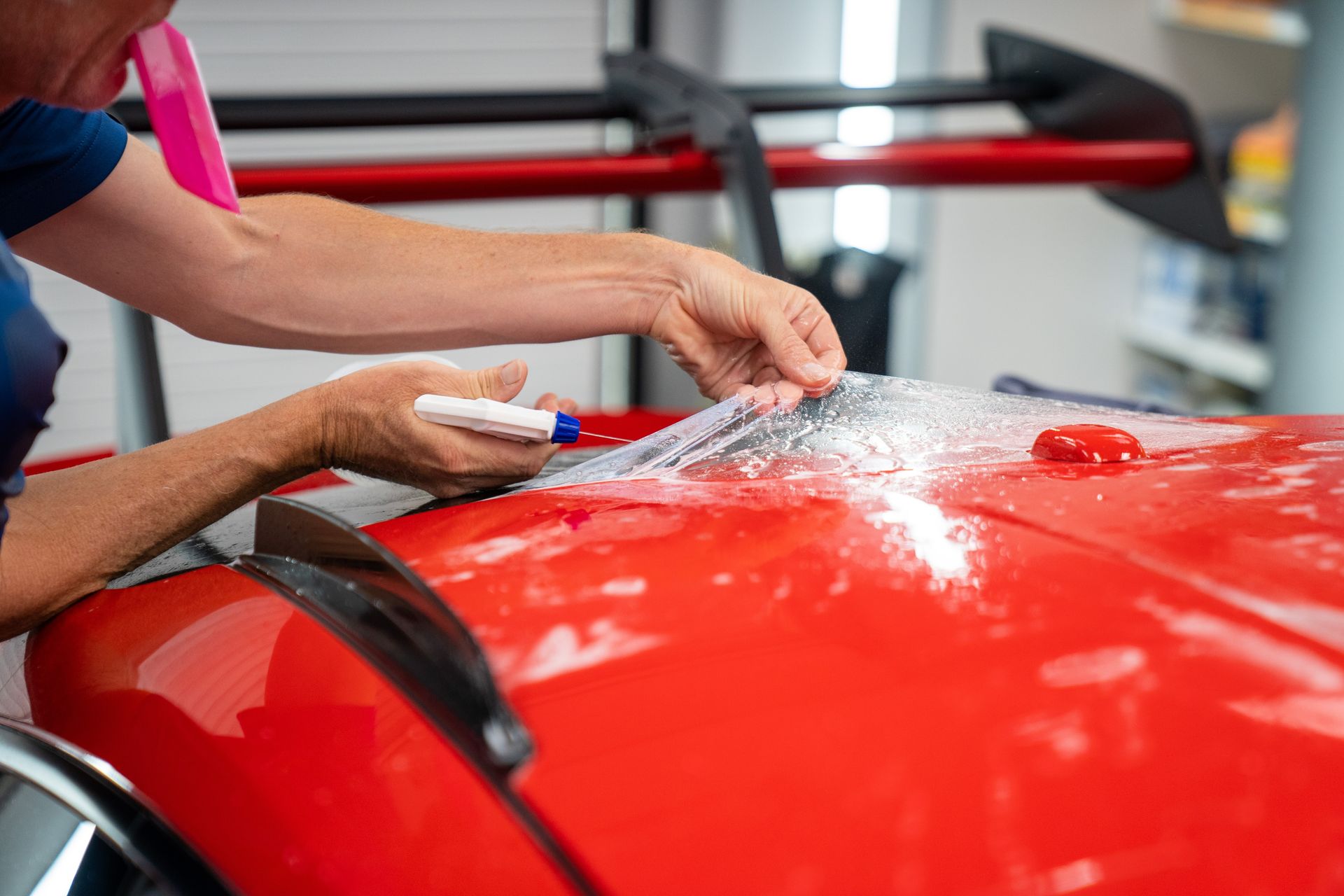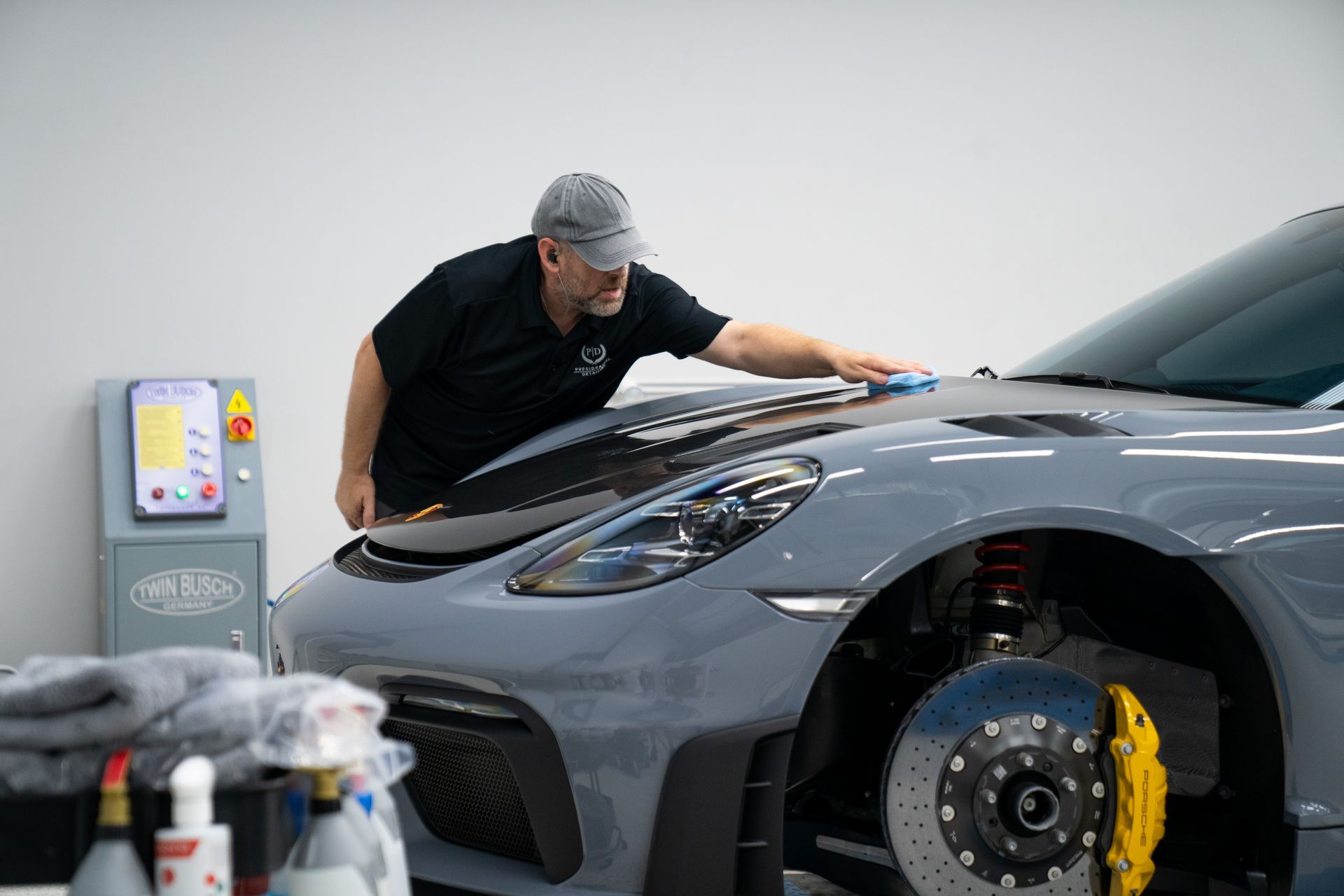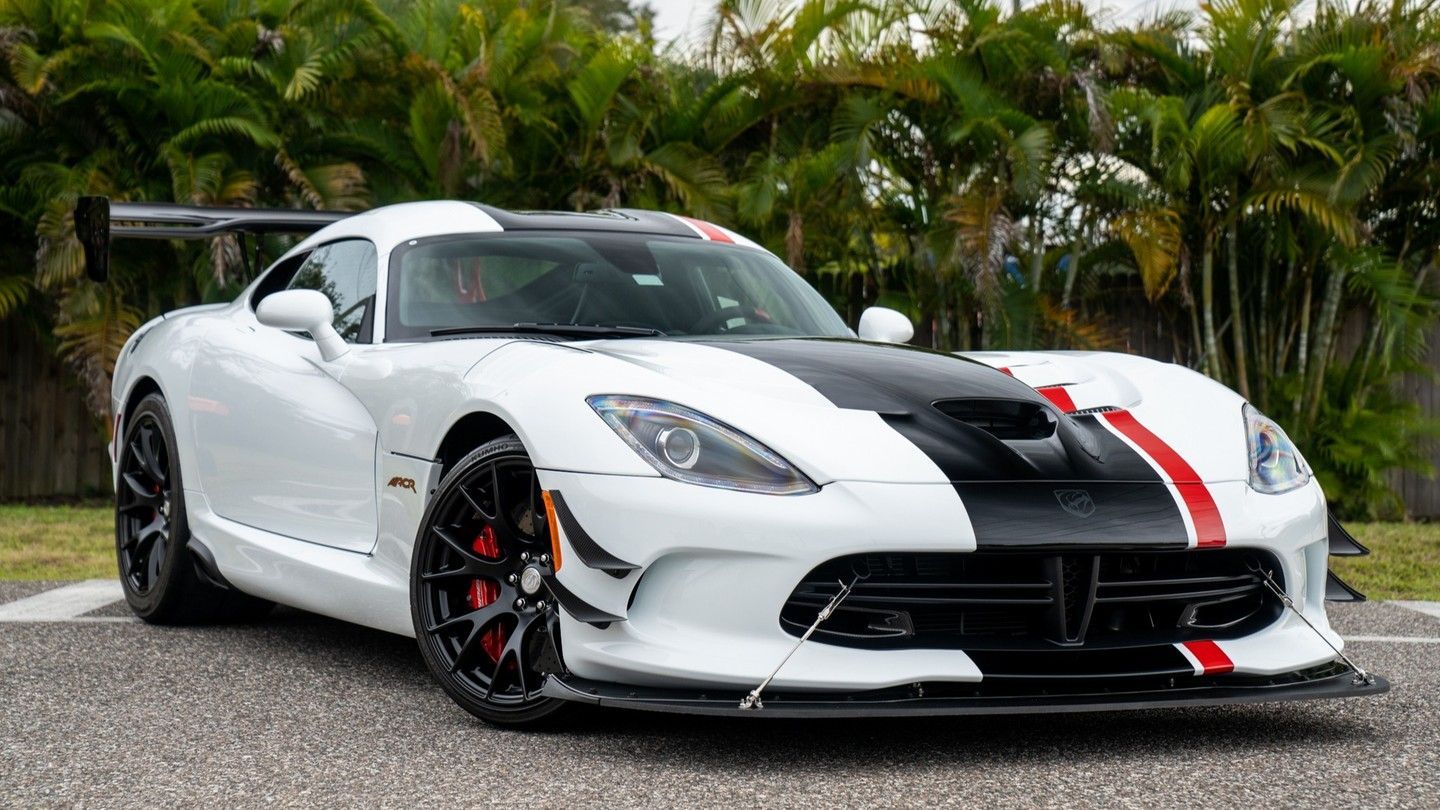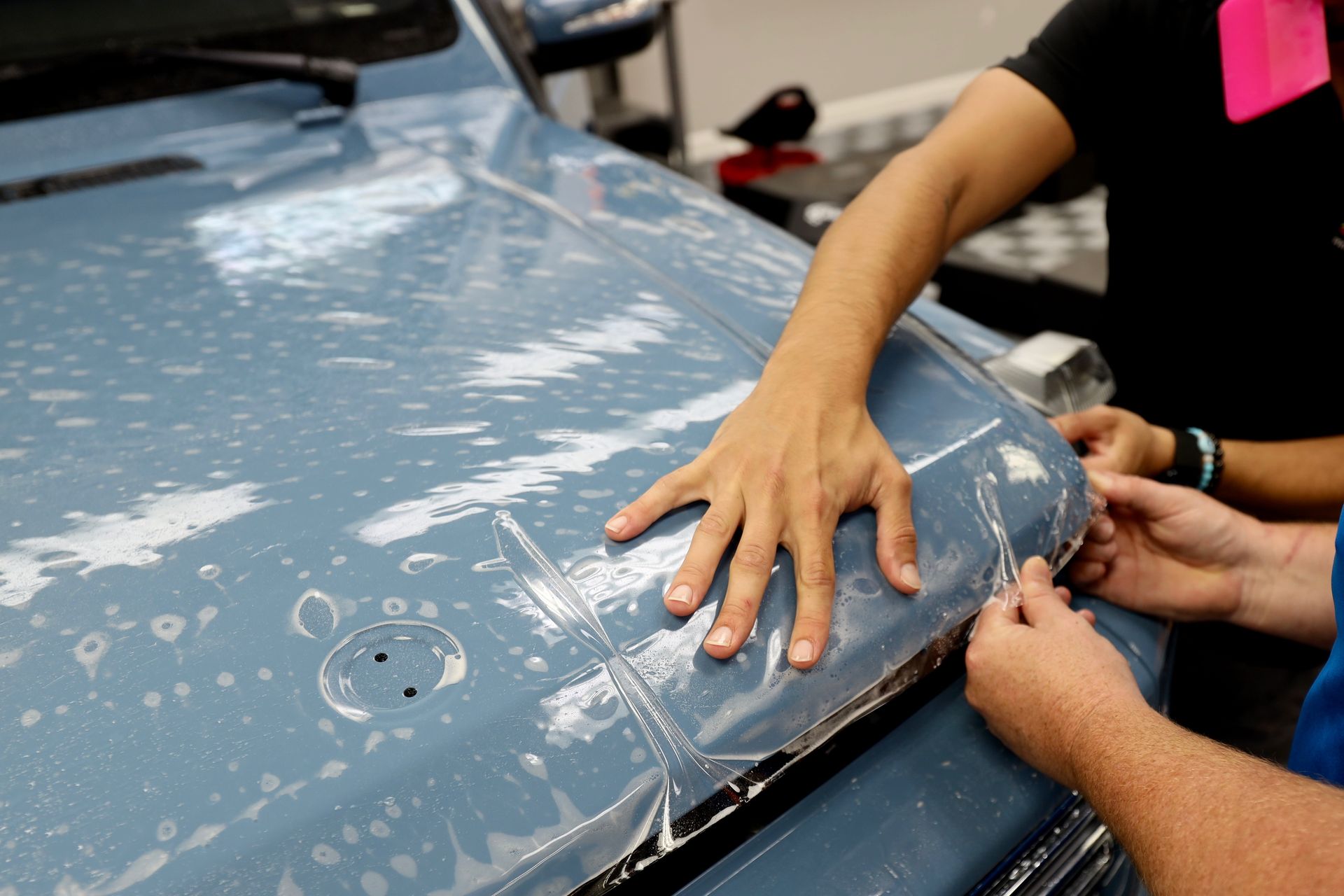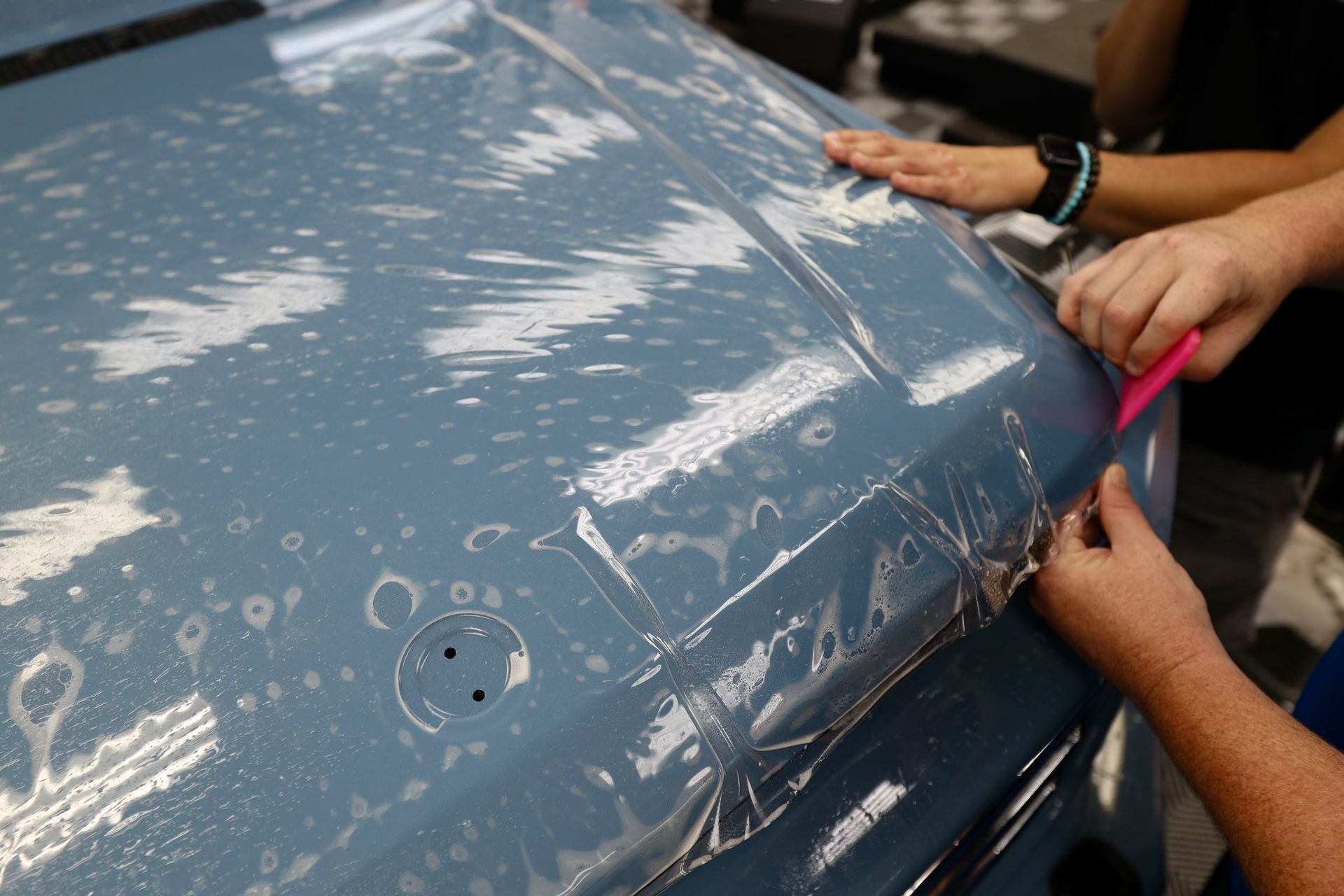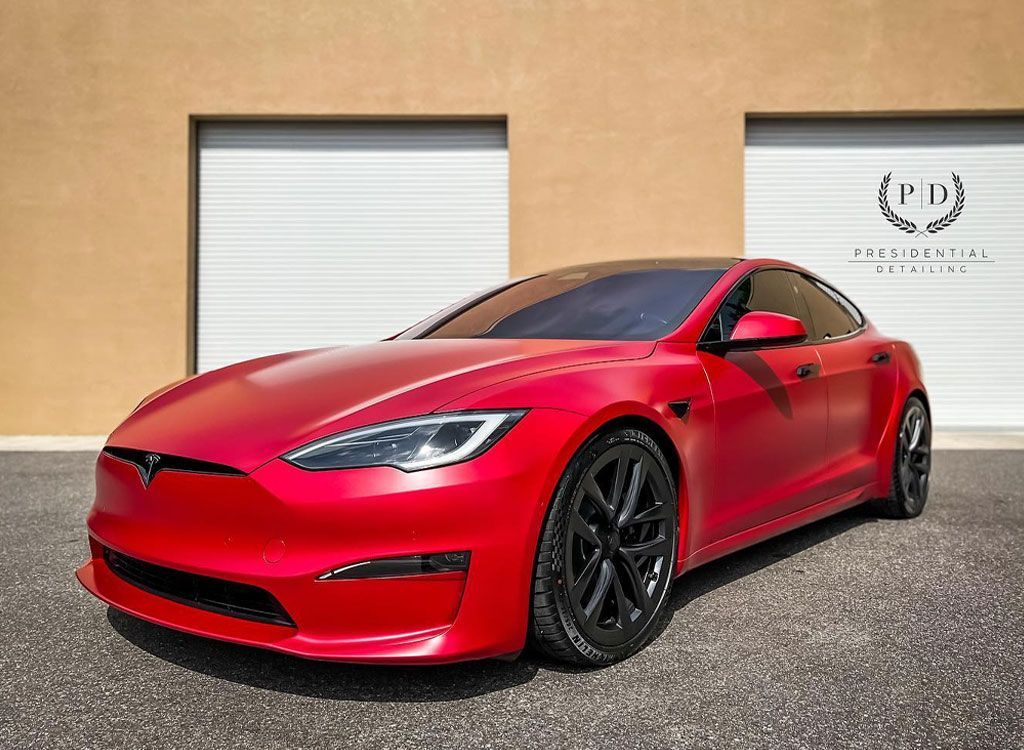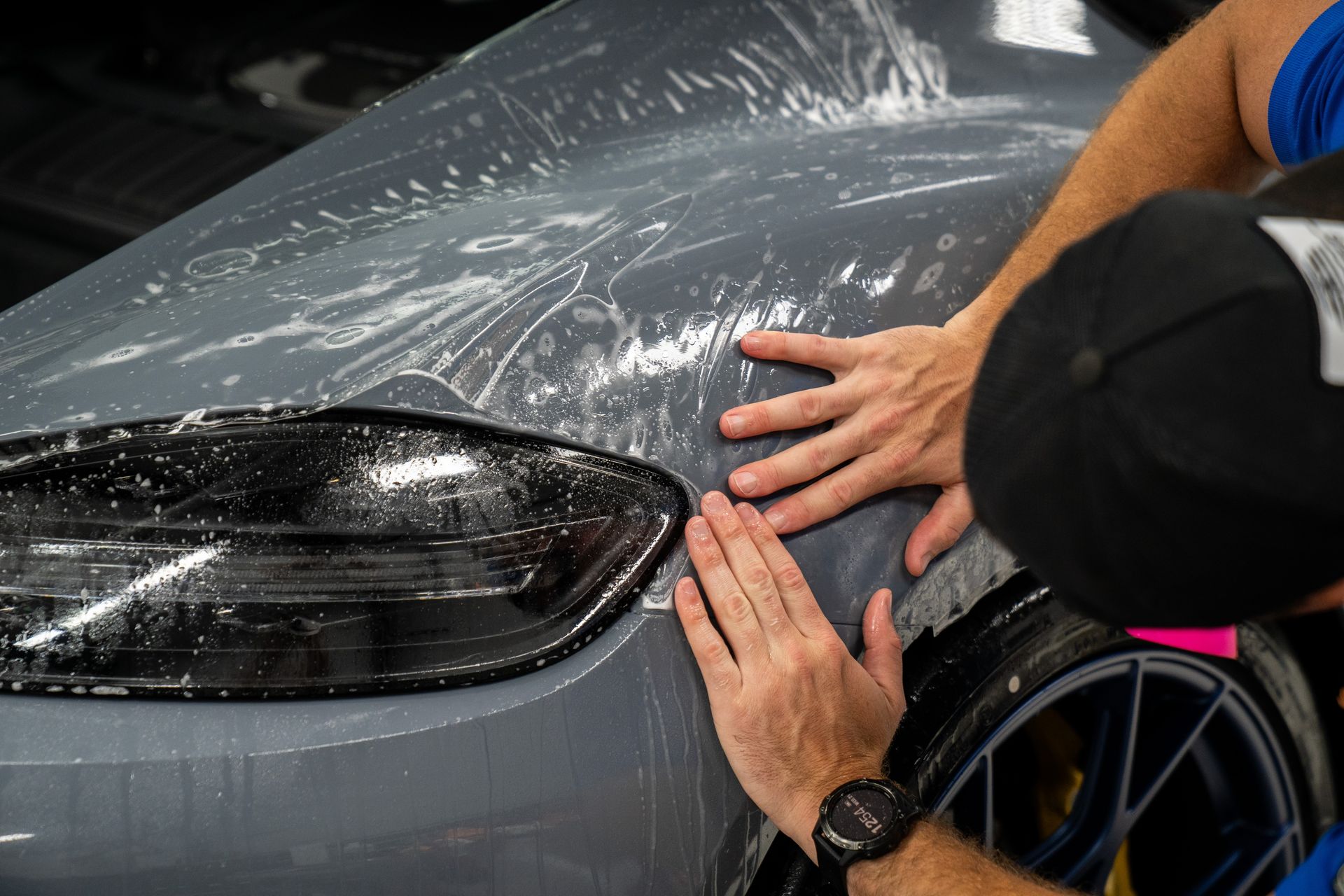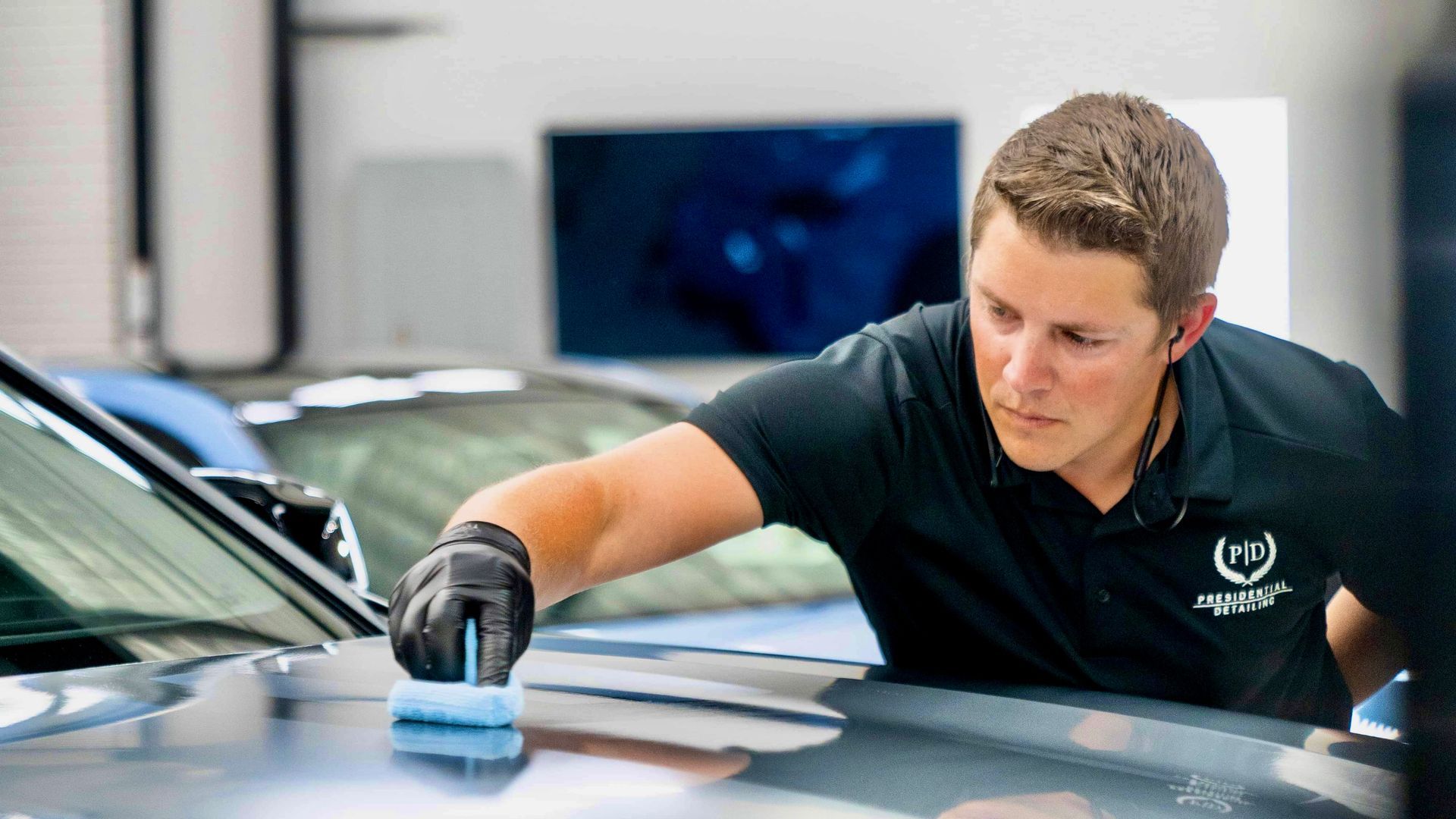How Tailored Paint Protection Film Enhances the Style and Protection of Your Vehicle
CALL (813) 723-9679
GET A FREE ESTIMATEWhen it comes to keeping your vehicle looking fresh and stylish while protecting it from everyday wear, tailored paint protection film might just be your best ally. Have you ever wondered how some cars seem to shine effortlessly, free of scratches or chips? Tailored PPF provide a snug fit that hugs every curve of the car, offering both protection and a sleek appearance. This innovative solution transforms the way we think about vehicle maintenance, blending functionality with personalization. Whether you drive a classic beauty or a modern marvel, investing in tailored PPF ensures your car stands out on the road and stays looking new for years.
A tailored paint protection film enhances a vehicle's style by providing a perfect fit that follows the vehicle's contours, allowing for seamless coverage without visible edges or seams. This not only maintains the car’s original look but also offers customization options such as glossy or matte finishes, enabling owners to achieve the desired aesthetic while protecting their investment from scratches and other damages.
What Are Paint Protection Films?
Tailored paint protection films are specifically designed films that conform to the unique contours of a vehicle, ensuring a precise fit. Imagine having a protective layer that feels like it was custom-made just for your car—this is the essence of tailored PPF. Created using advanced digital technology, these patterns allow for meticulous cutting that accommodates your vehicle’s every curve and crevice. This innovative approach not only enhances aesthetic appeal but also maximizes protection against scratches, chips, and environmental damage. But how does this method compare to traditional, generic PPF applications?
Comparison with Generic PPF
When we look at generic PPF, it's important to note that it often involves a more manual process of cutting and shaping on-site. While this might seem convenient, it can lead to inconsistencies in fit and coverage. Tailored paint protection film patterns are pre-cut using state-of-the-art computer-aided design (CAD) software. This advanced technology ensures a nearly flawless outcome by minimizing human error during installation. The result is a smooth, seamless appearance that just looks better.
Tailored PPF offers several key advantages over generic products. Firstly, because they are pre-cut, there's less chance of exposed edges or gaps where contaminants could settle in. Think about it: would you rather wear an off-the-rack suit that requires constant adjustments or one made just for your frame? Similarly, a tailored paint protection film can snugly wrap around difficult areas while providing that extra layer of protection exactly where it's needed most. Choosing tailored PPF is clearly centered around investing in durability and enhancing your vehicle's look as well as safeguarding its surface.
Design and Customization Options
The realm of tailored paint protection film (PPF) extends far beyond mere functionality; it presents a canvas for personal expression and aesthetic enhancement. In 2024, vehicle owners are eager to protect their investments while showcasing their unique styles. This has led to a vibrant marketplace filled with choices that cater to diverse tastes and preferences. Among the customization options available, car owners can select from various finishes and colors, allowing them to transform their vehicles into something truly individual. For instance:
- A glossy finish creates an eye-catching sheen that shimmers under sunlight, ideal for those who want their car to dazzle.
- A matte finish provides a more subdued elegance that turns heads without screaming for attention.
Whether you prefer a statement piece or subtle sophistication, these finishes allow you to express your character. Adding color is another exciting option in the PPF world. Many brands offer colored paint protection films that mimic high-quality paint jobs without requiring extensive bodywork. Imagine giving your classic coupe a fresh look with vibrant racing red or converting your SUV into an eye-catching metallic blue without having to take it to the shop for weeks.
In today’s competitive automotive landscape, it is no longer enough for vehicles to merely provide basic functionality; they must tell a story about their owners through thoughtful designs and personalized touches. With advancements in design and customization options, tailored PPFs offer vehicle owners much more than just protection; they present an opportunity to craft a narrative around one’s car while ensuring it remains in prime condition.
Installation Process Overview
The installation of paint protection film (PPF) is not just a simple application; it is a sophisticated process that relies on both professional skill and specialized equipment. Each step matters significantly in ensuring that the film protects the vehicle effectively while enhancing its appearance.
Step-by-Step Installation
- Preparation: The first step in this meticulous procedure involves thoroughly cleaning the vehicle's surface. Think of this as preparing a canvas before painting: any dirt, grime, or wax residues can prevent the PPF from adhering properly. This thorough cleaning typically takes about 30 to 60 minutes and usually entails washing the car and possibly using clay bars to remove any embedded particles. Any contaminants left behind can lead to imperfections under the film. After ensuring the surface is spotless, the next phase involves aligning the PPF precisely onto the vehicle.
- Alignment: During this step, the pre-cut paint protection film is carefully aligned with the vehicle's contours. Technicians often utilize digital templates specific to that vehicle make and model. They also apply a soapy water solution to help maneuver the film easily into place; this makes repositioning much simpler and helps avoid misalignment. It's almost like setting up a delicate puzzle where each piece needs to fit just right for maximum coverage without visible seams. Once everything is perfectly aligned, it’s time to move on to the application phase.
- Application: In this crucial step, specialized tools are employed to apply the PPF securely onto the vehicle's surface. Using a squeegee, technicians push out any trapped air bubbles or moisture beneath the film, pressing firmly but gently to ensure a snug fit against all contours and curves of the vehicle. This method enhances adhesion and guarantees an aesthetically pleasing finish with no visible imperfections. Specialized tools such as felt-tipped squeegees or soft bristles help avoid scratching or damaging the film during installation. Finally, once everything is adhered correctly, it's time for curing.
- Curing: The last stage in this intricate installation process involves using heat guns or lamps to cure the paint protection film onto the vehicle’s surface. Heating the film helps it conform better to every edge and contour while solidifying its bond with the paint beneath. Proper curing is essential because if it isn't done correctly, issues like bubbling or lifting at edges may arise—problems that compromise both protection and appearance. Once installed, you immediately notice an enhanced look and feel of your vehicle with a smooth, glossy finish that ensures it maintains its allure for years to come.
Key Benefits and Protection
Investing in paint protection film for your vehicle is more than just adding a layer of protection—it’s about providing your car with a comprehensive shield against everyday wear and tear. Here are the key benefits that make PPF a valuable investment for maintaining your vehicle's appearance and enhancing its longevity.
- Scratch and Abrasion Resistance: PPF acts as a protective barrier against minor scratches and abrasions caused by parking lot accidents, flying debris, or everyday encounters. This shield absorbs impacts, ensuring your vehicle’s paint remains pristine and free of unsightly marks. It’s especially beneficial for maintaining the exterior in environments where the car is prone to frequent contact with rough surfaces.
- UV Protection: Over time, UV rays can cause significant fading and degradation of your vehicle’s paint. A paint protection film blocks up to 99% of harmful UV rays, helping preserve the vehicle’s vibrant color and preventing sun damage. Vehicles with paint protection film had 40% less paint damage, emphasizing its effectiveness in long-term protection.
- Self-Healing Properties: Modern PPF formulations have the ability to self-heal when exposed to heat. Minor scratches or swirl marks disappear when exposed to sunlight or warm water, keeping your vehicle looking fresh without requiring manual intervention. This feature significantly reduces the appearance of everyday damage, maintaining your vehicle's appearance with minimal maintenance.
- Chemical Resistance: A paint protection film provides an impermeable shield against harmful chemicals like bird droppings, tree sap, and road salts. These substances can damage the paint if left untreated, but with PPF, your vehicle is protected from the corrosive effects of these contaminants. This protection prolongs the life of your vehicle's paint and maintains its integrity through different seasons.
- Enhanced Aesthetics and Resale Value: By preserving your vehicle’s exterior from scratches, UV damage, and chemicals, a paint protection film helps maintain its aesthetic appeal. This not only enhances the car’s appearance but also boosts its resale value. Protecting your vehicle with PPF ensures it looks great and holds its value for future buyers.
High-quality paint protection film provides comprehensive protection for your vehicle, safeguarding it from a range of hazards that could damage the paint and reduce its value. With benefits like scratch resistance, UV protection, self-healing properties, and chemical resistance, PPF ensures your car stays in top condition for years to come.
Selecting the Best PPF for Your Car
When selecting the right paint protection film for your vehicle, it’s crucial to evaluate various factors that impact both its protection and appearance. By understanding features like film thickness, finish type, and brand reputation, you can make an informed decision that aligns with your specific needs. Here’s a breakdown of the key aspects to consider when choosing the best PPF for your car.
- Film Thickness: Paint protection films typically range from 6 to 8 mils in thickness, with thicker films providing greater protection. A thicker film helps guard against scratches, chips, and environmental damage, ensuring that your vehicle’s paint stays intact. However, it’s important to remember that thicker films can be more difficult to install, particularly for DIY applications, due to their added rigidity.
- Finish Type: The finish of the PPF plays a significant role in the visual impact of your vehicle. A glossy finish enhances the car's natural shine and gives it a polished, vibrant look, which is ideal for those wanting to highlight the beauty of their paintwork. On the other hand, a matte finish offers a more understated and sophisticated appearance, appealing to those who prefer a sleek, modern style.
- Brand Reputation: Choosing a reputable brand is essential when selecting PPF, as established brands are known for their rigorous testing and high-quality products. Renowned brands offer durable films that provide lasting protection, giving you peace of mind in your investment. Customer reviews and testimonials can also offer valuable insights into the performance of different brands and their real-world effectiveness.
- Personal Preferences: Ultimately, the choice of PPF depends on your personal preferences and how you wish to balance protection with style. Whether you prefer a glossy or matte finish, or whether you prioritize durability over ease of installation, these factors contribute to a well-rounded decision. Take the time to assess your priorities to ensure you select a PPF that meets both your functional and aesthetic needs.
Selecting the right paint protection film is key to enhancing your vehicle's protection and appearance. By considering factors like film thickness, finish type, and brand reputation, you can make an informed decision that aligns with your preferences. Investing in tailored, high-quality PPF ensures both style and longevity for your vehicle, protecting it from environmental damage while maintaining its visual appeal.
Shield Your Ride with Premium PPF Services in Tampa, FL
Presidential Automotive Detailing offers Tampa’s
finest paint protection film (PPF) services, designed to keep your vehicle flawless in the face of daily challenges. Our expert team uses cutting-edge techniques to install high-quality PPF that defends against scratches, rock chips, and environmental wear while enhancing your car’s sleek appearance. Whether you’re protecting a luxury vehicle or preserving your daily driver, we tailor every installation to your specific needs. Contact us today to schedule your PPF consultation and give your vehicle the protection it deserves! Call (813) 723-9679 to get started!
